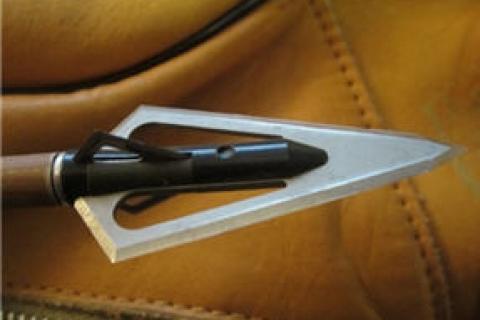
When it comes right down to it, the most important piece of bowhunting gear we have is the broadhead at the end of our hunting arrows.
A good broadhead will fly true, be unaffected by wind, and cause devastating wound channels that ensure quick and humane kills. The last characteristic is the most important, because without the capability to inflict a lethal wound, the rest doesn’t matter one little bit.
 |
| Broadheads that are no longer razor sharp are great for shooting practice to make sure you’re 100 percent on target. |
I won’t preach about broadhead design or whether two, three or four blades are best. All that is personal preference so long as you can make that arrow fly well from your bow. And for light-skinned animals such as deer, most well-constructed, established broadheads will do the trick so long as your aim is true.
So let’s assume we all have rugged broadheads of a good design that fly directly at what we aim at – because this is what we should have all settled on long before the hunting season began. All that’s left to do is ensure they are razor sharp.
Thus, I check my broadheads prior to each hunt. I typically examine them for nicks and then test them for sharpness by shaving a patch of hair on my arm (much to my spouse’s chagrin). A razor sharp blade will do this effortlessly.
If your broadheads are not razor sharp, you can either sharpen them, if possible, or buy new broadheads or replacement blades for the ones you use. I prefer to buy new broadheads and relegate the old ones for target practice sessions. That’s because once hunting season approaches, all you should shoot with is broadheads – at least that’s my opinion on the matter. Also, a factory sharpened broadhead is hard to beat.
When you hunt with a razor-sharp broadhead, you will get better penetration, cleaner cuts, and a better blood trail. In fact, it makes so much of a difference that I’d rather hunt with a 35-pound bow and a razor-sharp broadhead than a 60-pound bow and one dull as a spoon. This is something you should pay even more attention to as the season progresses. That’s because broadheads get dulled with time in the field and later in the year animal coats and fat increase, too, so you need all the help you can get.
In the end, it’s the hunter’s responsibility to ensure that he or she is using the sharpest, best broadhead available for the set up being used and animal targeted. Do this and the outcome is all but assured when that arrow flies true.
Get even more advice on buying arrows and broadheads at Bass Pro Shops 1Source.
- 5232 views

